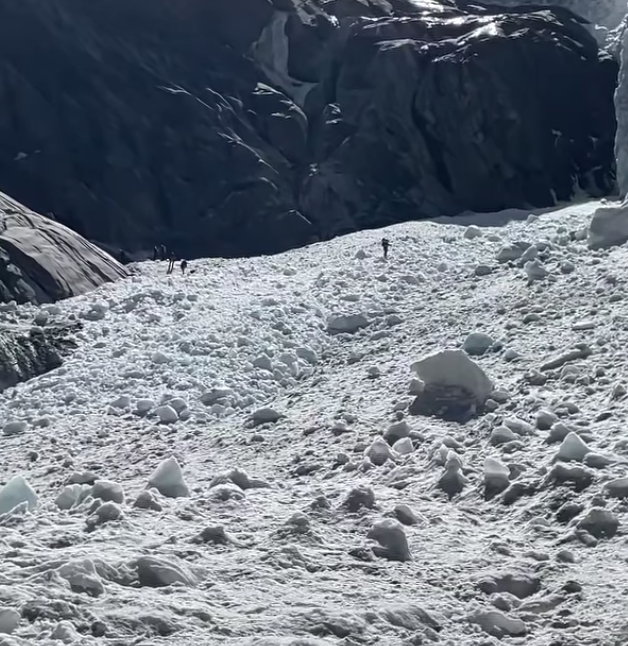View this post on Instagram
An earth-swallowing avalanche is hurtling towards you at 70 mph and you have nowhere to run. What do you do?
12 hours ago Brazillian climber Moeses Fiamoncini shared a video of just that: mega avalanches coming dangerously close to him and other climbers on Nepal’s 8,000-meter peak Annapurna. The video shows the climbers looking like sitting ducks below the avalanches that broke thousands of feet above them. But even at thousands of feet away the slides still come frighteningly close to the climbers.
The video shows not one but several avalanches breaking on Annapurna, giving testament to the destructive force of nature on one of our planet’s highest peaks. Fiamoncini wrote in an Instagram post regarding the avalanches, translated from Portuguese:
Acclimatization: The big problem between Field 2 and Field 3 (avalanches).
I’m coming back here to continue the account of the Annapurna and explain a little more about the reasons that make this mountain so challenging. As already said in the previous post, geography and climate are the great protagonists of this film, and we climbers are but mere supporting actors waiting for an opportunity to enter the scene.
To be clear, we can make a comparison with K2, which has 8,611 meters of altitude. The K2 is the second-highest mountain in the world, while the Annapurna, with 8091 meters, is only the tenth.
The base field of the K2 is located at an altitude of 5,000 meters, while the Annapurna is at 4,100 meters. In K2, there is therefore a 3,611-meter altimetry to be won. In Annapurna, this altimetry passes to 3,991, that is, we have in front of us a wall of almost 4,000 meters to be climbed, and it is not just any wall, because it consists of very risky paths. So risky, it seriously complicates the acclimatization of climbers.
With such a low base field, Field 2 of the Annapurna is mounted at 5,500 meters, which when it comes to high mountains, is not much. The crossing between field 2 and field 3 is the most delicate route, with very steep ice walls and route of frequent avalanches and landslides. This means that we climbers do not move from the 5,500 to acclimatize when the ideal way would be to make rotations close to 7,000 meters of altitude.
Also, staying in field 3 is also not very attractive. The tents are set up near 6,400 meters (depending on the conditions) on a glacier with blocks of unsteady ice, where we have to sleep listening to the constant noise of the ice breaking.
With a 4-field mounted between 6,700 and 6,900 meters, it can stand an altimetry of 1,400 meters for the attack on the summit, which involves new steep walls to be climbed.
But what’s wrong with an attack on the 1,400-meter-high summit, isn’t that what you climbers do?
Yes, that’s what we do, but then comes the climate issue, which will continue in the next post…
